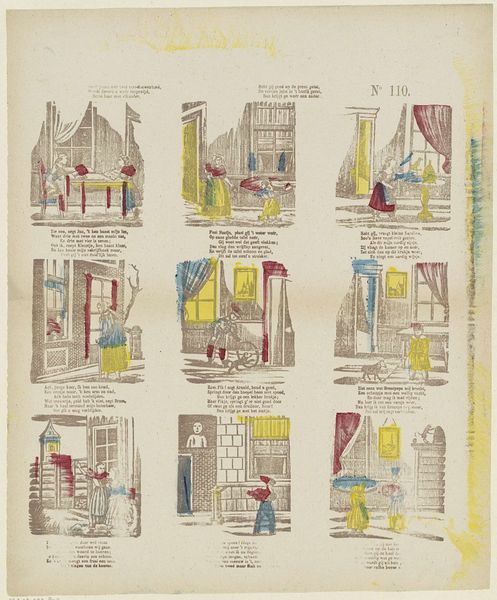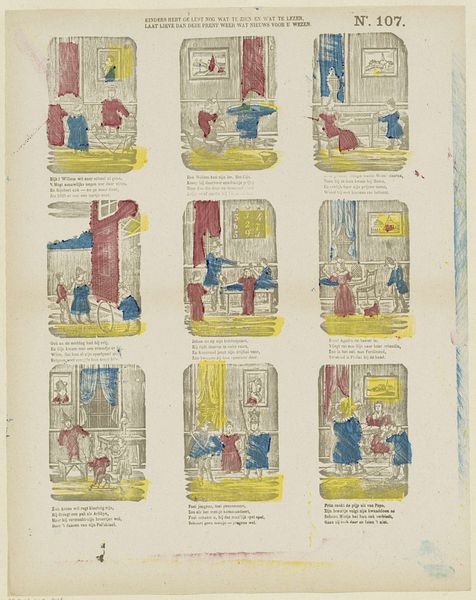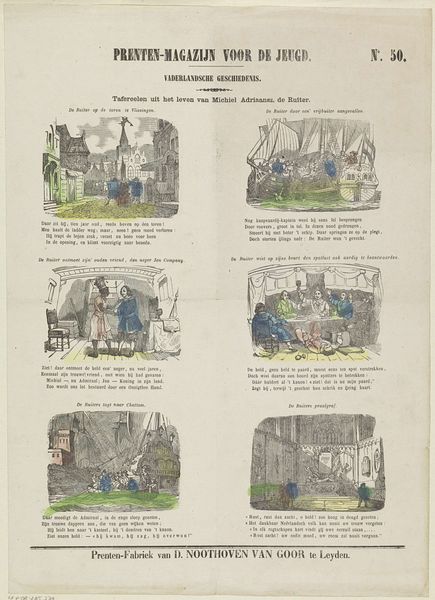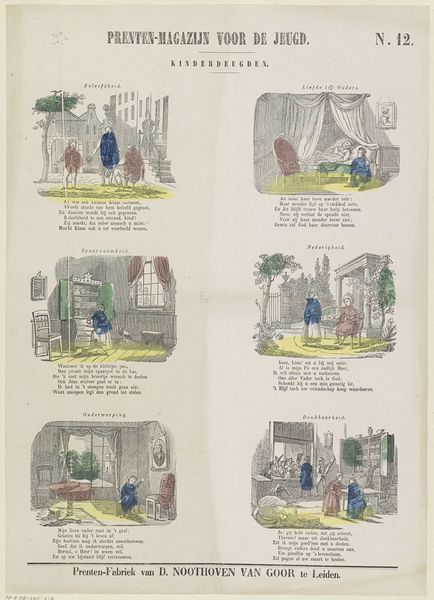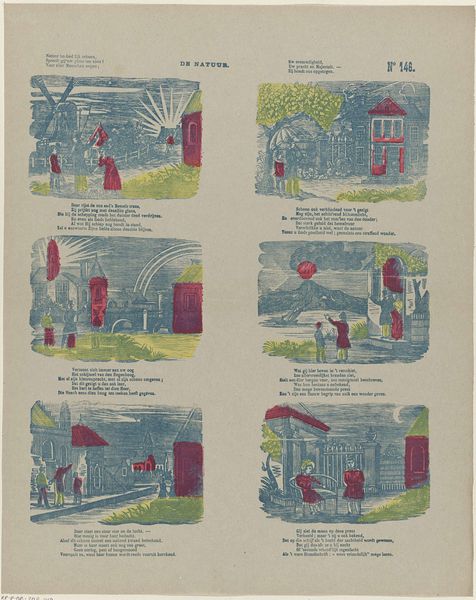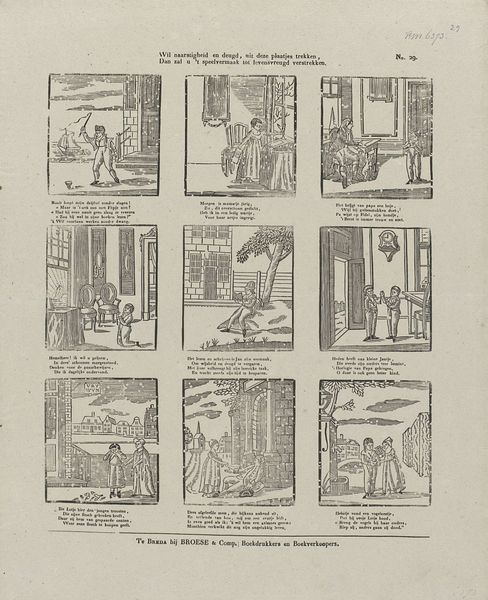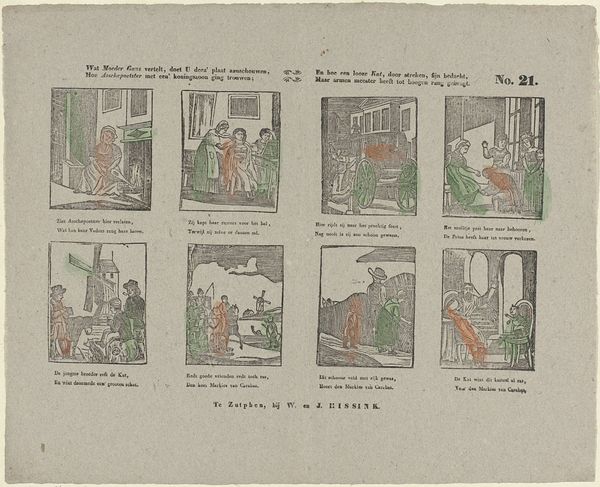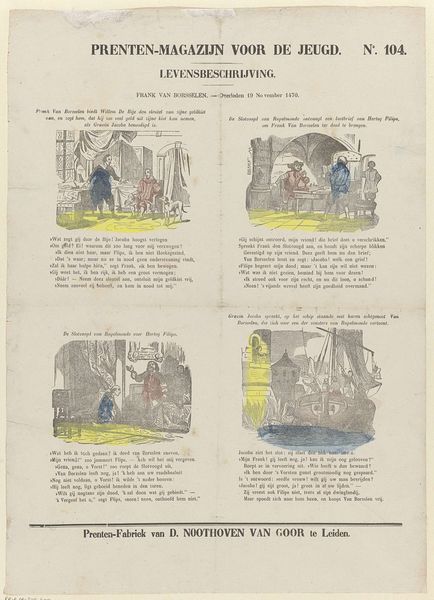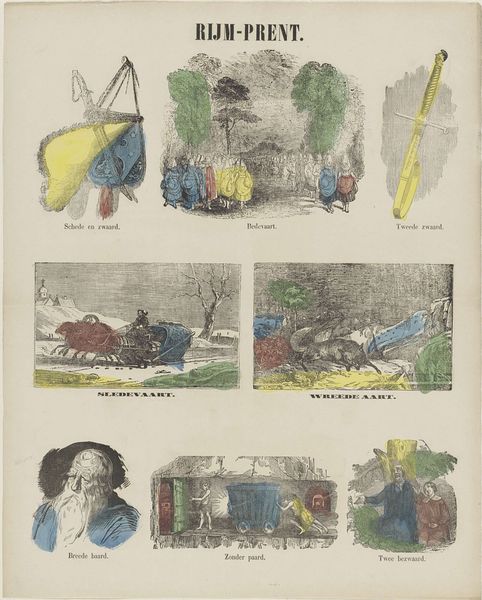
print, etching
# print
#
etching
#
landscape
#
cityscape
#
genre-painting
#
realism
Dimensions: height 390 mm, width 318 mm
Copyright: Rijks Museum: Open Domain
Curator: The print we're observing, entitled "De natuur," which translates to "The Nature," created between 1827 and 1894 by M. Hemeleers-van Houter, offers a fascinating example of 19th-century etching from the Rijksmuseum collection. Editor: It strikes me immediately as peculiar—almost childlike. The scenes are quaint, simple, and the colors are applied somewhat haphazardly, creating an almost dreamlike, folk-art quality. Curator: Precisely. The work uses etching as the medium for an unfolding tableau that attempts to encapsulate nature itself, offering fragmented scenes—cityscapes, windmills, genre paintings. Look how the limited color palette—primary tones mostly—further abstracts these vignettes. Each adds a unique texture and emphasizes shape. Editor: But consider the socio-cultural context. This would have been produced during a period of increasing industrialization and urbanization. Could these scenes represent a nostalgic yearning for a simpler, pre-industrial past? The windmill scene, in particular, feels deliberate in its positioning of nature and labor in harmony. Curator: A pertinent reading, indeed. The compositions, while simplistic, demonstrate effective contrast and perspective. The textures achieved through the etching—notice the linear detail in the buildings and the swirling energy of the windmill scene. The visual elements suggest how diverse, but harmonic nature can be. Editor: And what of the poems included? I imagine those provide crucial cultural context for contemporary audiences of the time; providing meaning to everyday scenes. Perhaps the print functions didactically, or as popular entertainment – considering the role and function is crucial for understanding this etching as cultural artefact. Curator: I'm particularly drawn to the middle row: the architecture and how the church towers become visual anchors against that vibrant yet almost menacing skyscape. This is a powerful application of form and line, suggesting how even industrial structures or cultural artefacts remain a component within nature, be that harmonious, or menacing. Editor: Looking at this piece again—armed with this dialogue and consideration for compositional qualities—highlights for me how public perceptions of nature can be constructed or idealized through mass media imagery of the time. Fascinating. Curator: Indeed. Studying Hemeleers-van Houter's work allows us to probe how basic, material elements interact within their composition and to then ponder the function such forms are given across societal stratifications of cultural and economic status. A powerful object!
Comments
No comments
Be the first to comment and join the conversation on the ultimate creative platform.
